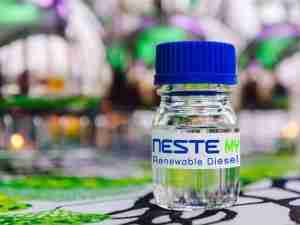Singapore Banks Should Brace for a New Sort of Pain: Gadfly
By: Christopher Langner | Feb 15 2017 at 03:00 PM | Maritime
Singapore banks’ problem with oil and gas services firms has just stepped up a notch.
Pain from distressed loans to offshore energy companies dominated Oversea-Chinese Banking Corp.‘s earnings call Tuesday and will probably be a hot topic when DBS Group Holdings Ltd. reports its own numbers Thursday. OCBC Chief Executive Officer Samuel Tsien repeated several times that he can’t guarantee the worst is over.
Judging by both his remarks and some recent restructuring events, however, the losses may start coming in a slightly different form.
OCBC nonperforming assets: S$2.89 billion
It’s all about a bank’s specific allowance for bad debt, which is calculated by determining how much of a loan is delinquent and then netting out what a lender expects to recover by either confiscating and selling collateral or by helping the company to remain operational.
Rules on provisioning against losses are complex, but the amount set aside depends upon where an advance falls on a scale of four— special mention, substandard, doubtful and loss. Roughly speaking, financial institutions need to set aside enough capital to fully cover all the debt in the last category, about half of the doubtful amount and about 10 percent of substandard. That’s after a bank takes out what it thinks it can recover from collateral. Even facilities that have been restructured can be split among the final three classifications.
So here’s the worry. First, the migration of loans down the scale has quickened, which helps explain the spike in provisioning. Second, and perhaps of more concern, net recoverable amounts are falling and it appears banks don’t yet fully understand how little they’ll actually be able to get back from their loans to distressed shipping and oil services companies.
Take Rickmers Maritime. In January, it announced it had sold a container ship that was built in 2004 as lenders enforced their collateral. In a presentation in October, the vessel had a book value of $40 million. The sale resulted in a $31.6 million impairment, suggesting it only fetched $8.4 million. Swiber Holdings Ltd. is also talking about selling its oldest rig to help repay a loan. The company has found someone willing to pay almost exactly the book value of the equipment, which was built in 1977.
Bank executives aren’t oblivious to the issue. OCBC’s Tsien, answering a question on whether the higher provisions were a result of more nonperforming loans or lower collateral values, said:
“It is indeed a bit of both because every quarter, we mark it down and look at the collateral value, look at the future cash flow. And as the charter continues to have a shorter period, the discounted net cash flow value becomes more and there is a gap between the loan amount and that will take it into specific provisions as well.”
In the case of OCBC, if that gap keeps growing, the hit could be significant. More than two-thirds of its nonperforming loans have collateral and therefore could require higher loss provisioning. Almost half of DBS’s nonperforming assets also have collateral attached to them, past filings show.
Financial institutions in Singapore are likely adhering to best practice when it comes to evaluating collateral and accounting for it when provisioning. The Monetary Authority of Singapore suggests lenders use historical recovery values as well as expert valuations. It’s just that the situation has deteriorated so fast that past numbers may be worthless and experts could also be looking in the rear view mirror.
Bank shareholders, brace for more pain.
This column does not necessarily reflect the opinion of Bloomberg LP and its owners.











